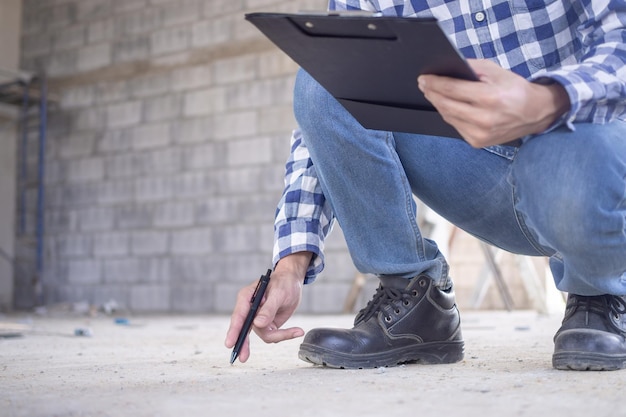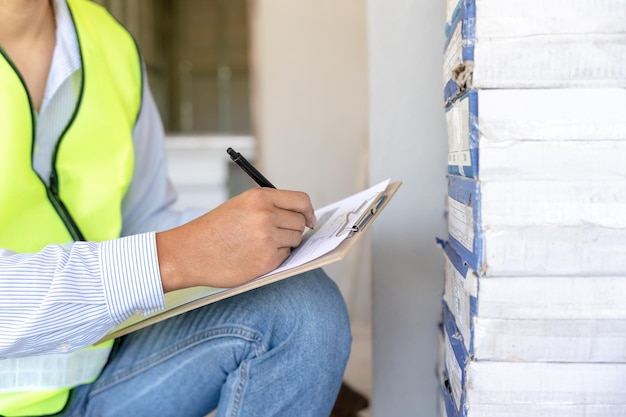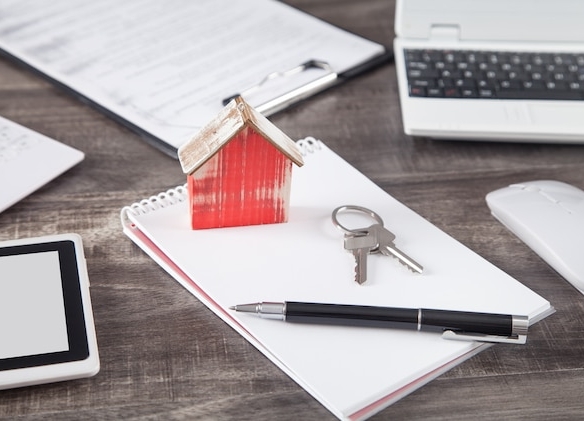Your Essential Home Inspection Checklist: What Every Buyer Needs to Know
Purchasing a home is an exciting milestone, but it comes with its own set of challenges, especially when it comes to the home inspection process. As a buyer, knowing what to look for during an inspection is crucial to ensure your investment is sound and your future home is safe. This essential home inspection checklist will guide you through each step, offering practical buyer inspection tips and real estate inspection guidelines. With our property inspection advice, you’ll feel confident and well-prepared, understanding exactly what to look for in a home inspection. Our goal is to be your trusted partner in navigating the complexities of real estate, making the buying process as smooth and reassuring as possible.## Understanding Home Inspection Basics
A home inspection
is a crucial step in the home buying process. This section will cover the fundamentals of home inspections, including their importance, key components, and common issues found during the process.
Importance of a Thorough Inspection
A thorough home inspection is vital for any potential homebuyer. It provides a comprehensive evaluation of the property’s condition, helping you make an informed decision about your purchase.
According to the National Association of Realtors, a professional inspection can uncover hidden issues that might not be apparent during a casual walkthrough. This information can save you from costly surprises down the road.
A detailed inspection report also serves as a powerful negotiating tool. If significant issues are found, you may be able to request repairs or a price reduction from the seller.
Key Components of a Home Inspection
A comprehensive home inspection typically covers several key areas of the property. These include the structural components, exterior features, interior systems, and overall safety of the home.
Inspectors will examine the foundation, roof, walls, windows, and doors. They’ll also check major systems like electrical, plumbing, and HVAC.
The inspection should also cover insulation, ventilation, and any visible signs of water damage or pest infestation. Remember, the goal is to get a clear picture of the home’s overall condition and any potential issues.
Common Issues Found During Inspections
Home inspections often reveal a range of issues, from minor cosmetic problems to major structural concerns. According to experienced inspectors, some common findings include:
-
Faulty wiring or outdated electrical systems
-
Plumbing leaks or outdated pipes
-
Roof damage or wear
-
Foundation cracks or settling issues
It’s important to note that no home is perfect, and finding issues during an inspection is normal. The key is understanding which problems are minor and which could be deal-breakers.
Exterior Home Inspection Checklist
The exterior of a home can reveal a lot about its overall condition. This section will guide you through what to look for when inspecting the outside of a property.
Roof and Gutter Assessment
The roof is one of the most critical components of a home’s exterior. A thorough inspection of the roof can prevent costly repairs in the future.
According to Home Depot’s inspection guide, inspectors will look for signs of wear, damage, or improper installation. This includes checking for missing or damaged shingles, signs of leaks, and the overall age of the roof.
Gutters and downspouts are also crucial for proper water drainage. Inspectors will check for clogs, proper attachment to the house, and signs of water damage around the foundation.
Foundation and Drainage Check
A solid foundation is essential for the structural integrity of a home. Inspectors will look for signs of settling, cracks, or other damage that could indicate foundation issues.
Proper drainage is also critical to prevent water damage and foundation problems. The inspector will check the grading around the house to ensure water flows away from the foundation.
They’ll also look for signs of water pooling or erosion, which could lead to future issues if not addressed.
Exterior Walls and Siding
The condition of a home’s exterior walls and siding can provide valuable information about its overall maintenance and potential issues.
Inspectors will check for signs of damage, such as cracks, rot, or pest infestation. They’ll also assess the condition of the paint or siding material.
For brick homes, they’ll look for signs of mortar deterioration or structural issues. In vinyl-sided homes, they’ll check for loose or damaged panels that could allow water intrusion.
Interior Home Inspection Essentials
The interior inspection
is just as crucial as the exterior. This section will cover the key areas to focus on when examining the inside of a potential new home.
Plumbing and Water Systems
A thorough inspection of the plumbing system is crucial to prevent costly water damage and ensure proper functionality. The Mortgage Reports suggests that inspectors typically check:
-
Water pressure and flow in all fixtures
-
Signs of leaks in visible pipes
-
Condition of water heater
-
Proper drainage in sinks and tubs
Inspectors will also check for any signs of water damage, which could indicate hidden plumbing issues. This includes looking for stains on ceilings, walls, or floors.
Electrical Systems Overview
The electrical system is a critical component of any home, and ensuring its safety and functionality is paramount. During an inspection, professionals will:
-
Examine the main electrical panel for proper wiring and capacity
-
Check outlets for proper grounding and functionality
-
Inspect visible wiring for signs of wear or improper installation
-
Test GFCI outlets in kitchens, bathrooms, and outdoor areas
EMPeople’s inspection checklist emphasizes the importance of identifying any outdated or unsafe electrical components, such as aluminum wiring or knob-and-tube systems in older homes.
Heating and Cooling Systems
The HVAC system is crucial for comfort and energy efficiency in a home. Inspectors will thoroughly examine these systems, focusing on:
-
Age and condition of furnace and air conditioning units
-
Proper ventilation and ductwork
-
Thermostat functionality
-
Signs of leaks or unusual noises
They’ll also check for proper insulation, which plays a significant role in the efficiency of heating and cooling systems. Any issues with these systems can be costly to repair or replace, making this inspection crucial for potential buyers.
Buyer Inspection Tips

As a buyer, being prepared and engaged during the inspection process can help you make the most of this valuable opportunity. This section provides tips to help you navigate the inspection process effectively.
Questions to Ask Your Inspector
Engaging with your inspector during the process can provide valuable insights and clarifications. Realpha’s inspection guide suggests asking questions such as:
-
What are the most significant issues you’ve found?
-
How urgent are the repairs needed?
-
Can you explain how this system works?
Don’t be afraid to ask for clarification on anything you don’t understand. A good inspector will be happy to explain their findings and answer your questions.
Remember to take notes during the inspection. This will help you remember important points and follow up on any concerns later.
How to Prioritize Inspection Findings
Not all issues found during an inspection are equally important. It’s crucial to prioritize findings based on their severity and potential impact.
Major structural issues, safety concerns, and problems with essential systems (like electrical, plumbing, or HVAC) should be top priorities. These often require immediate attention and can be costly to repair.
Cosmetic issues or minor repairs, while worth noting, are generally less urgent. These can often be addressed over time after you move in.
Consider creating a list of findings, categorizing them as “Critical,” “Important,” and “Minor” to help you focus on what matters most.
Understanding the Inspection Report
The inspection report is a comprehensive document detailing all findings from the inspection. Raleigh Realty’s blog advises buyers to:
-
Read the entire report carefully, not just the summary
-
Look for patterns that might indicate larger issues
-
Pay attention to the inspector’s recommendations for further evaluation
If there’s anything in the report you don’t understand, don’t hesitate to ask your inspector or real estate agent for clarification. They can help you interpret the findings and understand their implications.
Remember, the report is a tool to help you make an informed decision about the property. Use it to guide your next steps, whether that’s requesting repairs, adjusting your offer, or moving forward with the purchase.
Real Estate Inspection Guidelines

Understanding the guidelines and best practices for home inspections can help ensure you get the most value from this crucial step in the home buying process. This section covers key aspects of planning and executing a successful inspection.
Choosing a Qualified Inspector
Selecting a qualified and experienced home inspector is crucial for a thorough and reliable inspection. Fortune Builders’ guide recommends:
-
Checking for proper licensing and certifications
-
Looking for inspectors with experience in your specific type of property
-
Reading reviews and asking for references from past clients
Don’t hesitate to interview potential inspectors. Ask about their experience, the scope of their inspections, and what their reports include.
Remember, the cheapest option isn’t always the best. Investing in a thorough inspection can save you money and headaches in the long run.
Preparing for the Inspection Day
Proper preparation can help ensure a smooth and productive inspection day. Here are some key steps to take:
-
Clear access to all areas of the home, including attics and crawl spaces
-
Ensure all utilities are on and functioning
-
Prepare a list of any specific concerns you want the inspector to address
If possible, plan to attend the inspection in person. This allows you to see issues firsthand and ask questions as they arise.
Remember to allow plenty of time for the inspection. A thorough examination of a typical single-family home can take several hours.
Negotiating Repairs and Costs
Once you have the inspection report, you may need to negotiate repairs or costs with the seller. Here are some tips for this process:
-
Focus on major issues that affect safety or functionality
-
Be prepared to prioritize and compromise
-
Consider asking for a credit rather than repairs, which gives you control over the work
Remember, negotiations should be handled through your real estate agent. They can provide valuable advice on what requests are reasonable and how to approach the seller.
Keep in mind that in some markets, especially competitive ones, sellers may be less willing to make repairs or offer credits. Your agent can help you understand what to expect based on current market conditions.









Join The Discussion